Location: Cardrona Forest near Peebles, Scottish Borders, Lowlands of Scotland
kind of castle: 16th-century peel tower, L-shaped
today: ruin, accessible to see from the outside, great care to be taken!
public transport: buses from Galashiels and Edinburgh to Cardrona Village, walk from there
scheduled monument: yes
managed by: ??? (I would say the same woodland trust just like the surrounding Cardrona Forest but I couldn’t find out exactly who)
entrance fee: £ 0 (free)
opening times: 24/7, all year round
directions: Google Maps
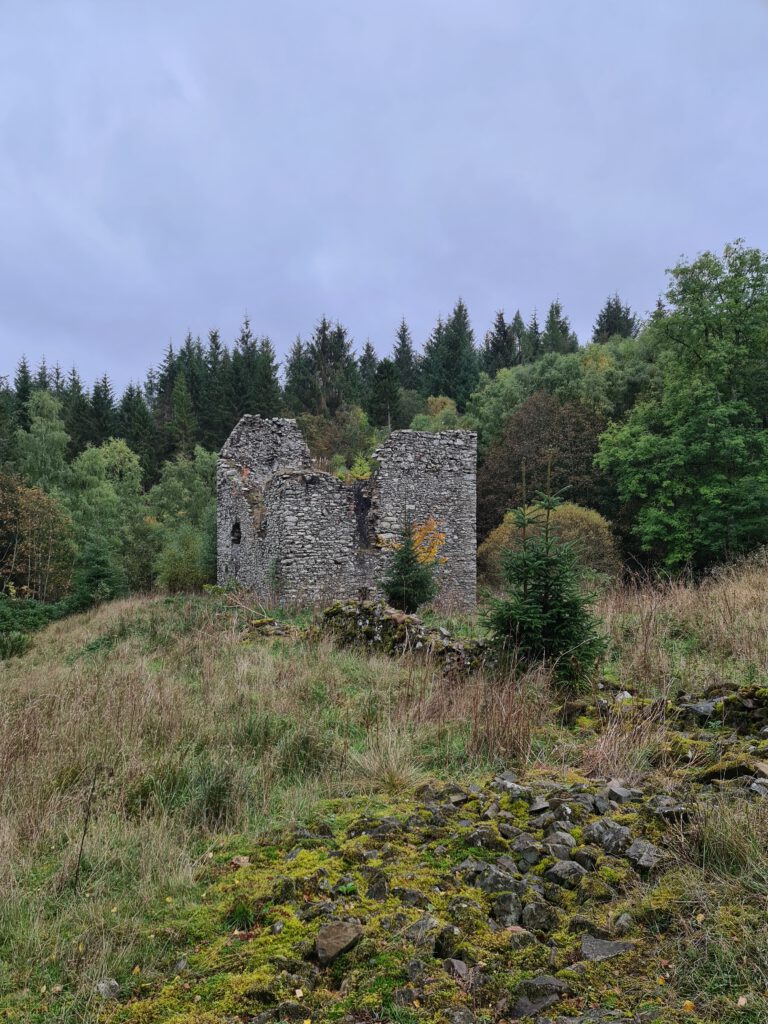
Cardrona Tower is definitely a sight that most people miss out on, even if they walk through the Cardrona forest they either don’t see it or don’t put a lot of thought in what function the tower once had. Being a perfect example of the wish of many lairds to show invaders and basically simply everyone that they could afford what was a clear symbol of moderate defensibility, even if just in a small version, Cardrona Tower had a more important role throughout history as well.
Once having consisted of the L-shaped peel tower and a courtyard on the south-west side of the tower, the role it played was that of some kind of a defensive warning system throughout the Tweed valley. The tower wasn’t the only one which most certainly could have been used for warning, the signal would have started in Elibank and would have gone through Holylee, Scrogbank, Caberston, Bold, Purvishilll, Innerleithen, Traquair, Grieston, Ormiston, Cardona, Nether Horsburgh, Horsburgh, Haystoun, Peebles, Neidpath, Caverhill, Barns, Lyne, Easter Happrew, Easter Dawyck, Hillhouse, West Dawyck, Dreva to Tinnis. All those towers stood within visible distance of the former and the later and would by that be perfect to protect the area from invading forces of every kind and in each direction.
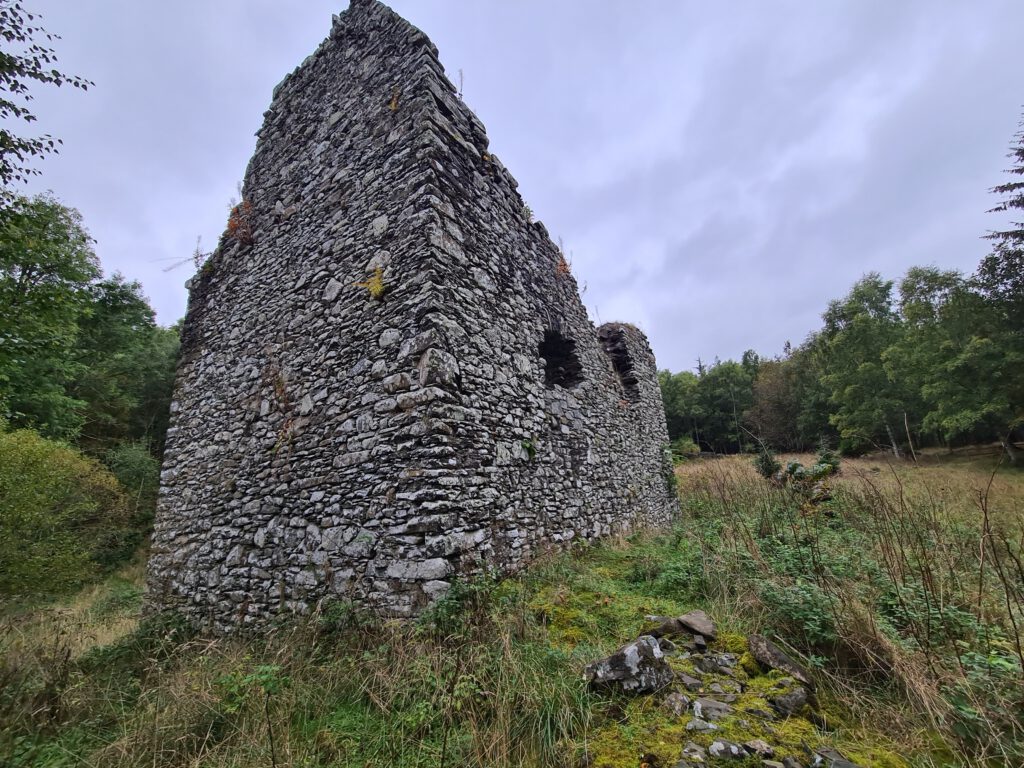
Once having been a home to the Govan family, most certainly one of its many branches, the former dwelling was located on the site during the fourteenth century before the present tower was erected some time during the late 1500s.
The Govans possessed the lands of Cardrona from the 14th until the 17th century, when their financial hardship resulted in its sale to James Williamson of Hutchinfield in 1685 about 100 years after Cardrona Tower was approximately built.
When James took over the lands including the tower, he soon built his own place at the bottom of the house, known as Cardona House, an inscription stone in the house dates it to 1686 and so it is safe to say that Williamson only lived in Cardrona Tower for a year if at all before he abandoned it for the grander and more comfortable house.

Ever since the tower has been inhabited by a colony of bats which reside in the basement of the ruin. However, they seem to have moved in quite a while after 1794 since according to notes the building was ‘still almost entire’ at that point. But even today the height of the tower is almost complete although the general impression is more an absolute ruin.
There is not much of a busy fighting history connected to Cardrona Tower and its decay and so it is no wonder that in the middle of the 19th century there were still remains of the wall surrounding the tower, remains of which might still be partially hidden below the green but are mostly overgrown or gone by now.
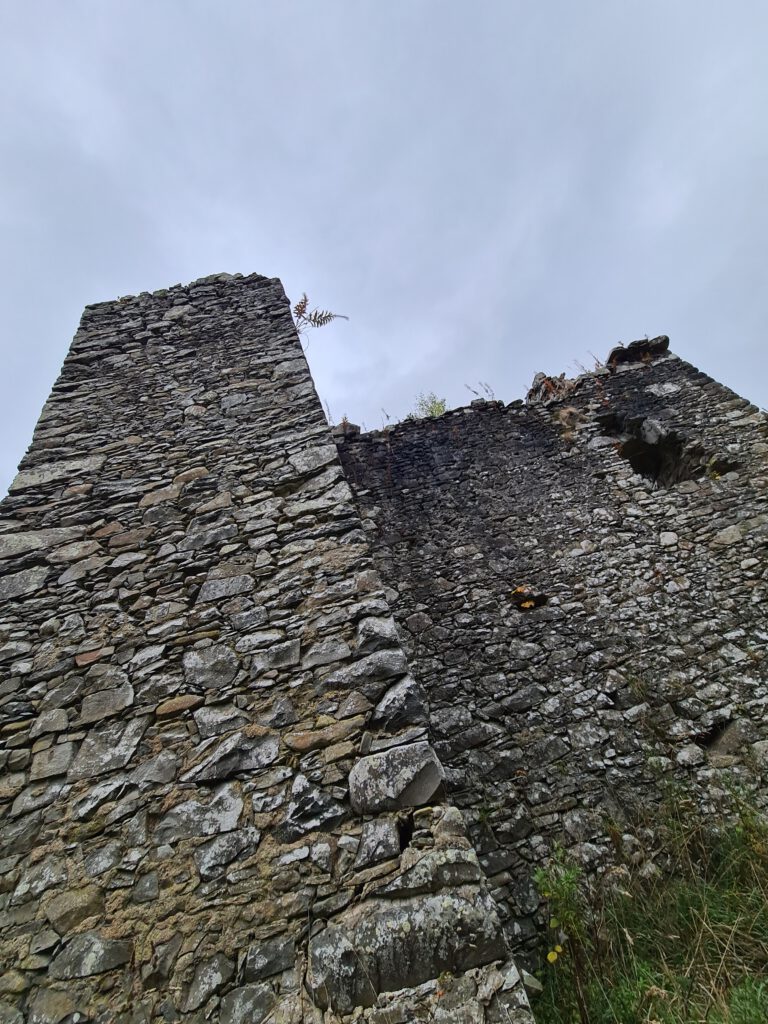
Overlooking the Tweed Valley and the River Tweed, Cardrona means Castle on the ridge and must have had a lovely view into all directions back in its day. However, today you can’t walk up the tower anymore so it leaves to be imagined what the owners must have seen when looking out their bedroom window.
A nice place to visit especially when you are enjoying a nice and relaxed stroll through the surrounding woodland, it is only a short detour from Cardrona Forest und Pikes Knowe – A scottish World and gives a lot of insights in many of the smaller border tower structures while being more intact that many others.
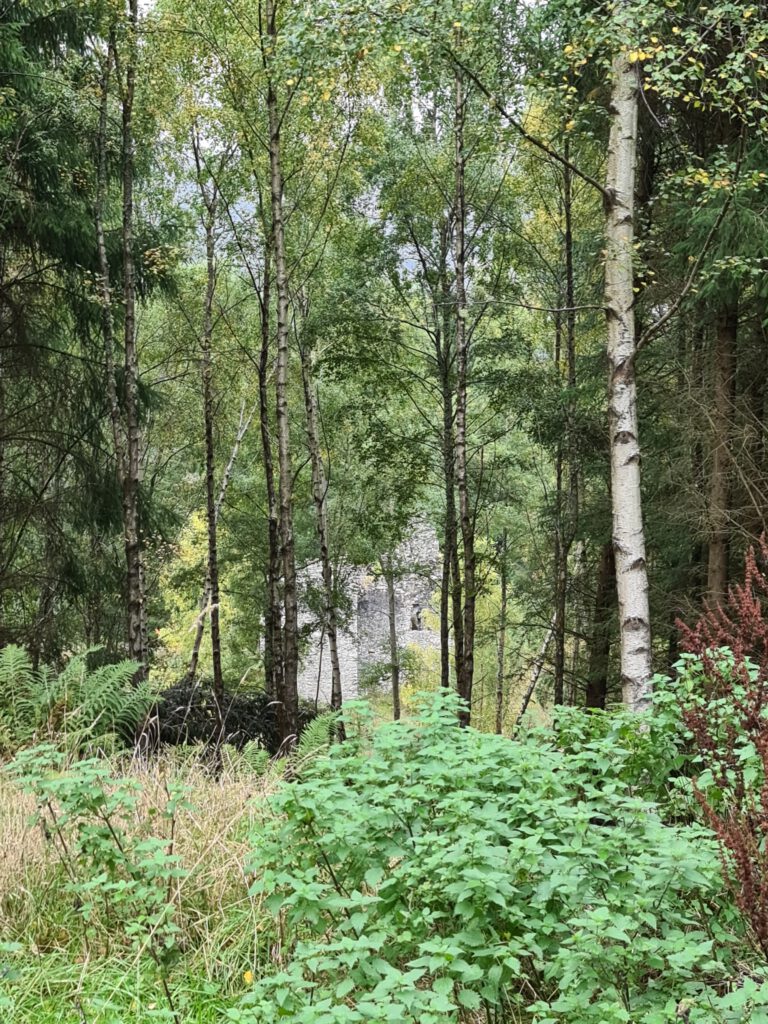
When visiting and walking around the tower please take great care since there can be masonry falling down and the building isn’t secure so definitely don’t go inside.
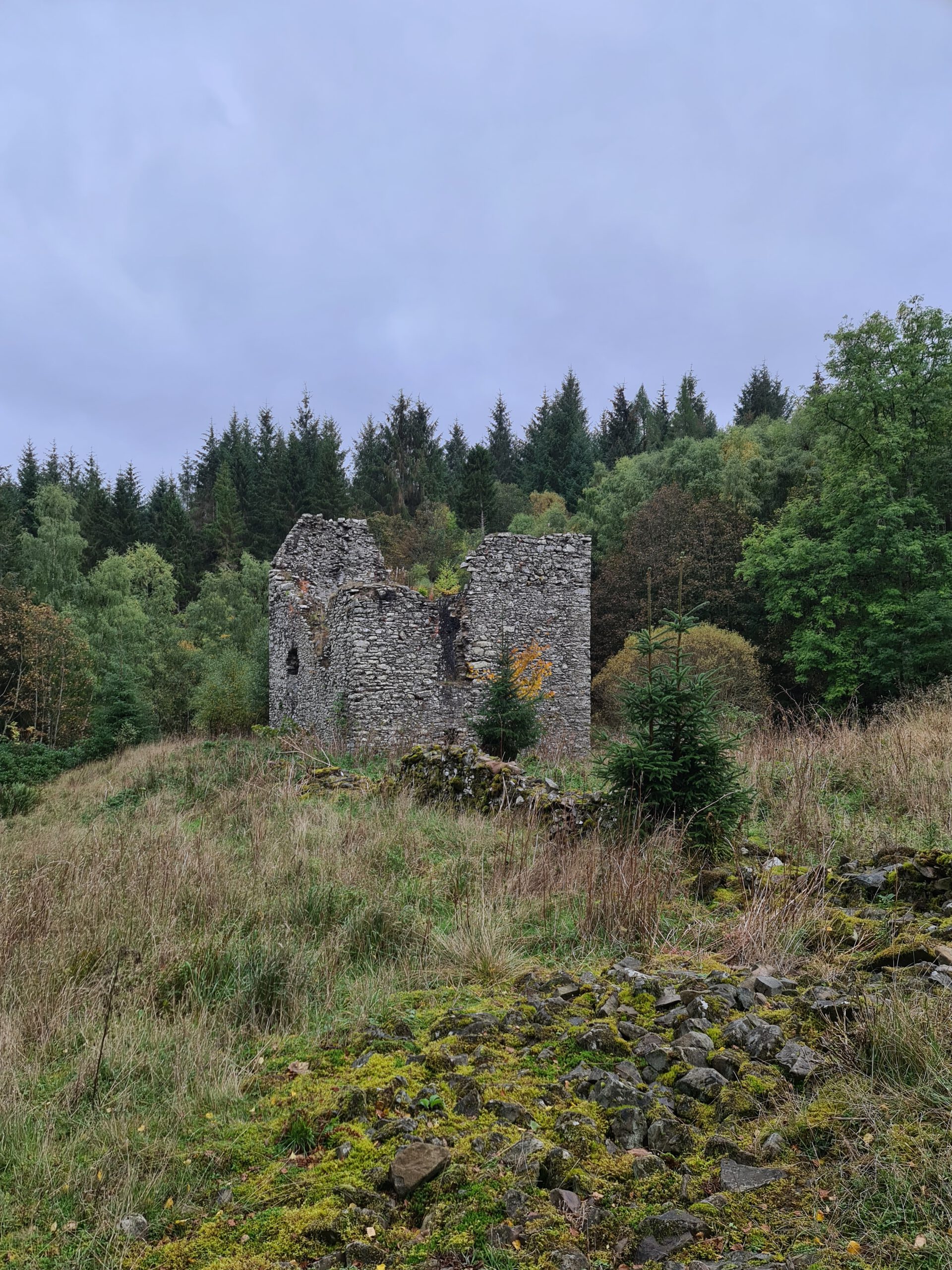

Pingback: Traquair House – A scottish World
Pingback: Wallace’s Tower, Roxburgh – A scottish World